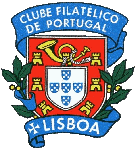 |
| Stamps |
 |
| First Day Cover with stamps |
 |
| Brochure |
The “Festa da Senhora da Agonia de Viana do Castelo”
(Feast of Our Lady of Agony, Viana do Castelo), held in August, is a prominent
hallmark in the world of Portuguese pilgrimage. The feast is famous for the
luxury of the costumes, the gold worn by the major-domos and for the richness
of the ethnographic procession, and includes religious processions, parades,
the “gigantones e cabeçudos” (giants and big-headed puppets) variety show, as
well as groups of bass drummers, pipers and “Zés- Pereiras”, a huge folk
festivity and the famous Minho firework displays. The main trait is the
devotion of the seamen, who reciprocate the grace received during storms and
shipwrecks. The main float is therefore traditionally transported by fishermen;
since 1968, a river procession started being held at the Lima River, featuring
the statue of this saint.
The “Festa de Santo Estevão” (Feast of Saint Estevão)
in Ousilhão is part of the Cycle of the Twelve Days of Northeast Trás-os-Montes,
celebrated around the time of the Winter solstice. Besides the important role
of the “Caretos”1, who are offending characters who ritually steal the smoker
during the rounds, the major-domos of these festivities include a king, vassals
and young men. The food ritual, in this case, involves a group meal – the table
of St. Estevão –, and the central role of circulating and distributing the food
offerings.
The “Festa de São Mateus” (Feast of Saint Mateus)
being an icon of the city of Viseu, is said to have been established as a free
fair since 1392. History also claims that it was a gift from king João I,
Master of Avis, on account of Viseu being the only Portuguese city to have been
on his side during the 1383-1385 crisis. From the 16th century onwards, it
became known as Feira de São Mateus (São Mateus Fair), its current name, and
with its more than 620 years of existence, is considered one of the oldest
fairs in the country and maybe even in the Iberian Peninsula. Within an area of
about 18,000 m2, hundreds of merchants and vendors, mainly of local gastronomy
and handicrafts, join a varied programme of musical and sports shows,
attracting thousands of visitors throughout the 40 days of the event, from
mid-August to mid-September.
The pilgrimage of “Senhora do Almortão” (Our Lady of
Almortão), in the municipality of Idanha-a-Nova, takes place fifteen days after
Easter and is the most important pilgrimage in the region. Legend has it that
the statue of Our Lady appeared in a myrtle bush. When
people tried to take it to Monsanto, it would disappear and reappear at the
initial location, where the shrine was built so that the statue would not
disappear again. The celebration includes religious and profane aspects,
defined by the characteristic singing for good tidings to Our Lady of Almortão,
accompanied by tambourines.
The “Festas do Povo de Campo Maior” (Festivities of
the people of Campo Maior) started in 1909 as part of the cult of St. John the
Baptist, patron saint of the village since the 16th century. Without a fixed
periodicity, these festivities take place “at the people’s wish” – the last
ones having been held in 2004 and 2011. The street decorations in the historic
centre, with flowers and other paper pointers, are a prodigy of the ephemeral
art and are a result of all of the residents’ initiative. The work starts some
six months in advance and each street chooses a theme, keeping it a secret to
be revealed publicly on the “enramação” night (26th to 27th September), when
the decorations are put up on the streets. The 27th is the official opening of
the festivities.
The feast in honour of “Nossa Senhora de Gadalupe”
(Our Lady of Guadalupe), in the municipality of Serpa, is associated with the
Easter celebrations. Being a saint worshipped by the numerous graces she
grants, as seen in the “former vows” offered to her and reports on her
intercession, particularly on the scourge of the 1868 drought, the festivities
in her honour include religious and profane expressions. The former includes
the procession on Easter Sunday, during which the statue is taken down from its
shrine in São Gens and taken to Salvador church. The ethnographic procession
then takes place, which includes extras on foot and allegoric floats,
recreating the history and traditions of the municipality. On Monday morning,
the solemn procession in honour of the patron saint takes place and in the
afternoon the procession takes to the city streets, which are carpeted with
rosemary. This set of ceremonial routes ends with a procession on Tuesday, in
which the statue is brought back to its shrine in Altinho. The meals in the
countryside, which include lamb stew, are just as important for their
association with the celebration of the rejuvenation naturally brought by the
spring cycle.
Technical Details
Date of Issue: 30 April 2013
Values: stamps of 0,03€, 0,04€, 0,36€, 0,50€, 0,70€,
0,80€, 1,00€ and 1,70€.
Acknowledgments: Clara Saraiva e Benjamim Enes Pereira
Designer: Atelier Whitestudio
Photos:
Printer: INCM
Process: Offset
Size: 30,6 x 27,7mm
Perforation: 11 3/4 x 11 3/4
Paper: FSC 110 g./m2
Watermark:
Sheet: with 100 stamps

























.png)






































No comments:
Post a Comment